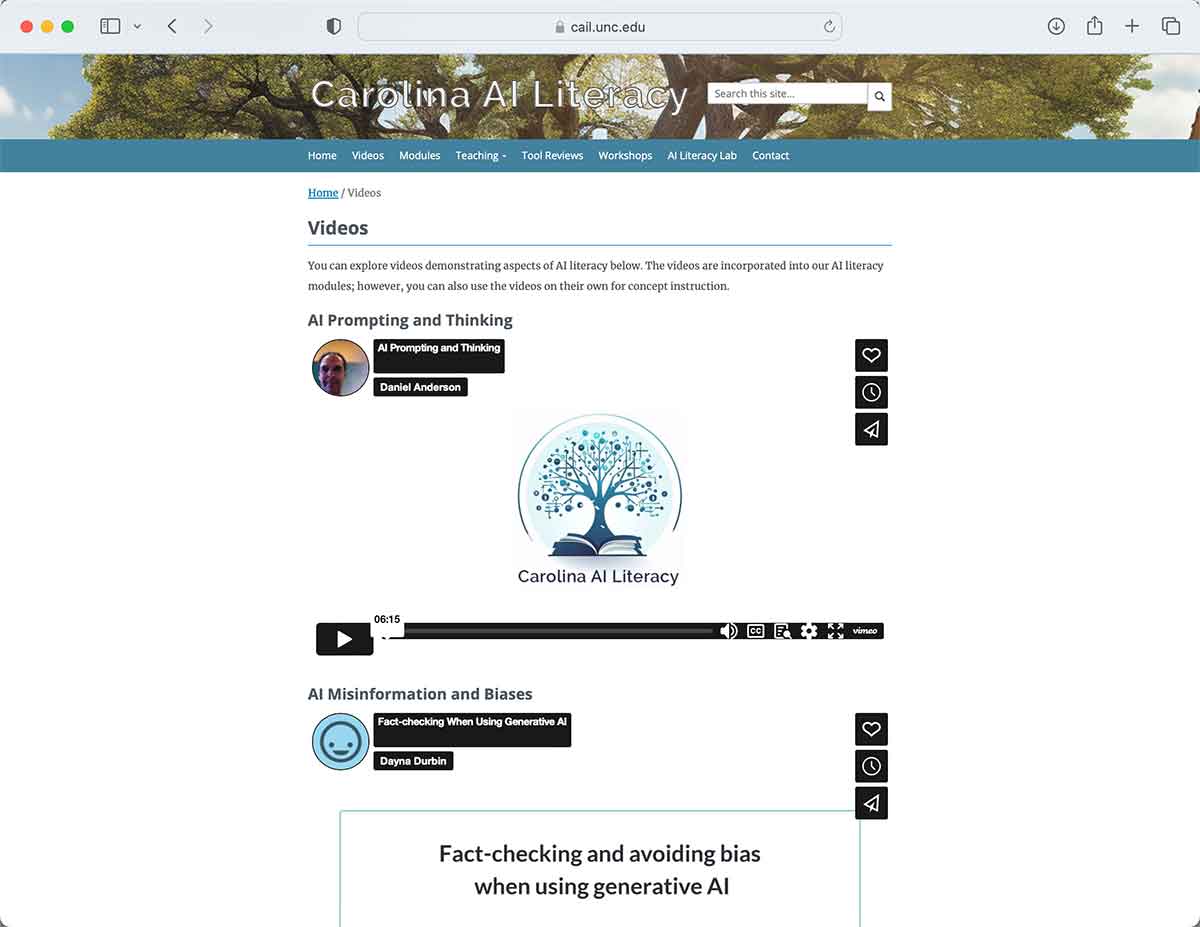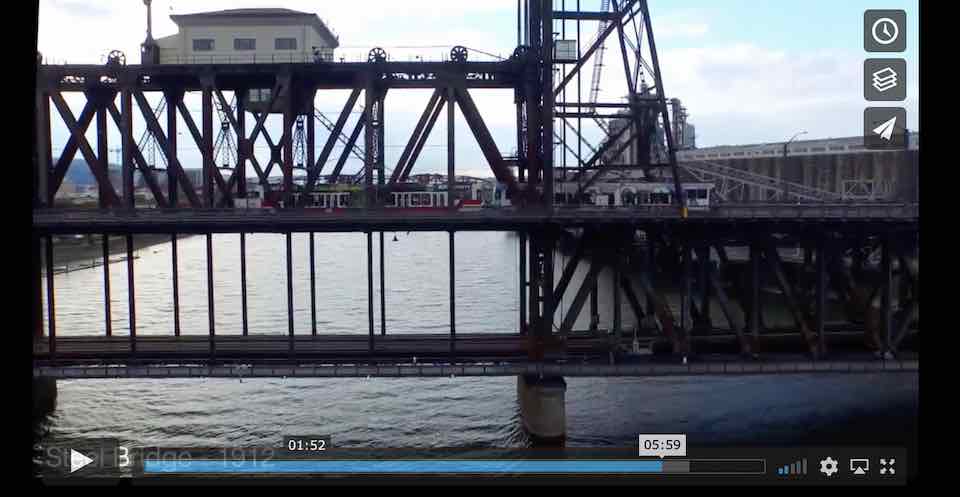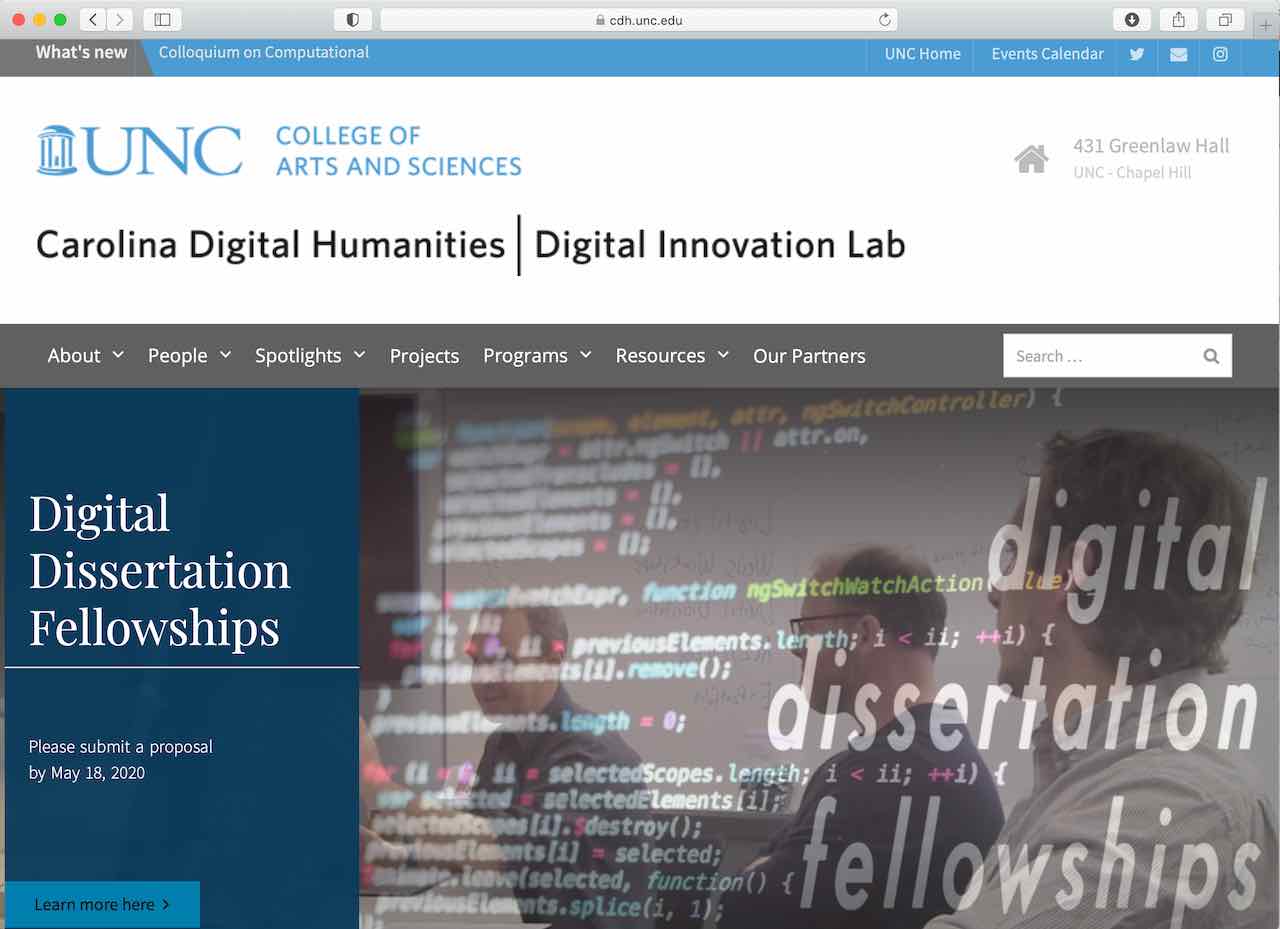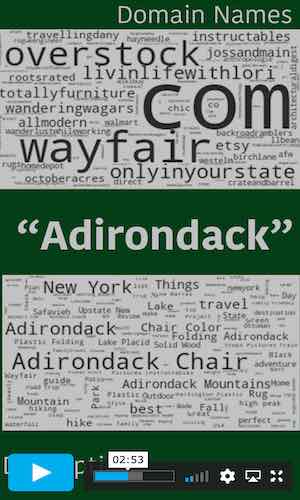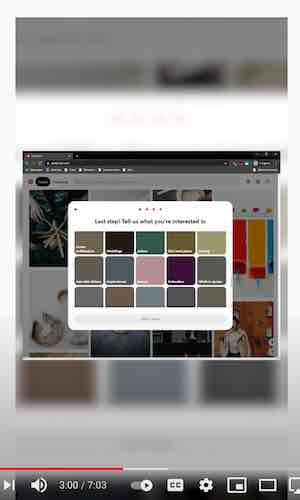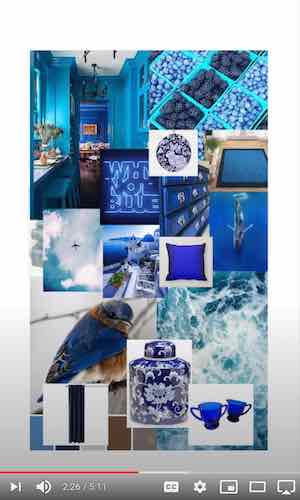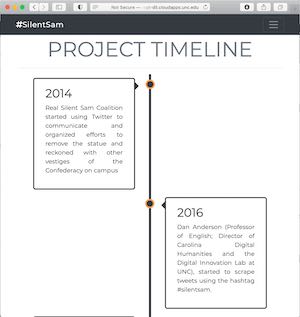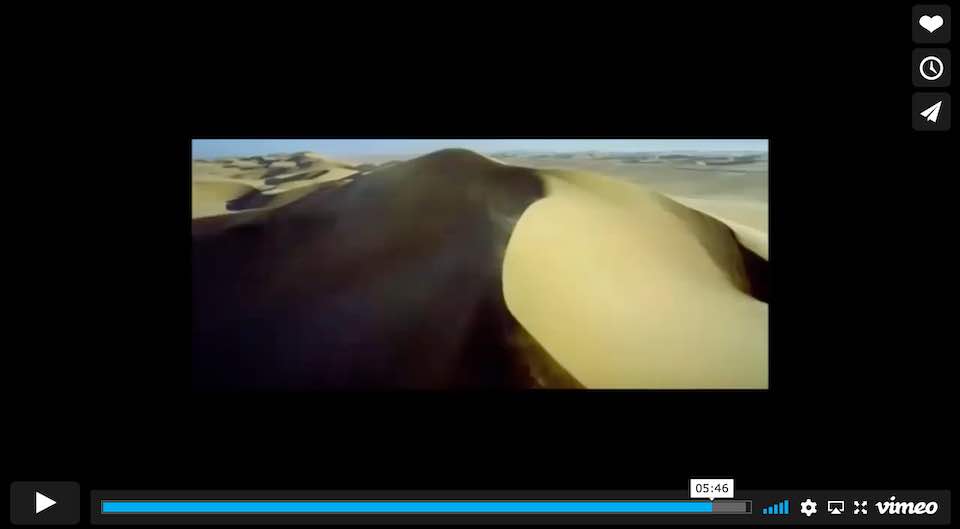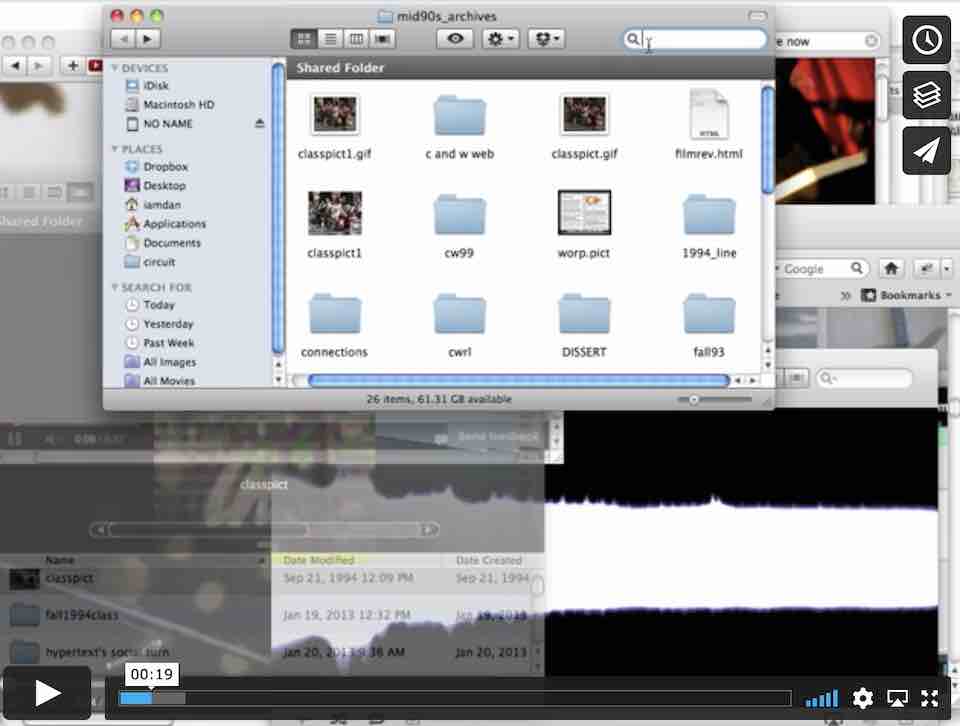This segment merges three (primary) texts: a screencapture video (Levels and Layers V1) recorded on January 27th, 2013 (http://vimeo.com/iamdan/levels); a web article originally published in 1994 (http://iamdananderson.net/malted/notmaimedbutmalted.html); and this text to be published in print sometime in the future (or when you read this, the past). These three texts evoke branching, merging, inscriptions, and snapshots. The screen capture from 2013, for instance, documents an excavation of materials stretching back to 1994. A contemporary veneer is cast over archival layers. Files in folders have been gathered from floppy disks pulled from boxes. Viewing the files in a Finder window becomes a contemporary performance, the icons in motion bringing forward historical associations. The text being edited (in the 2013 video) is the 1994 article. Here, we have levels and structure, stacks and arrangements, the spatialization of layers. As Nancy Kaplan and Stuart Moulthrop once put it, “the arrangement of topics, their order and their relations to one another, can be mapped on a plane, displayed as a hierarchical tree, or represented in some other scheme” (Moultrhope and Kaplan 265).

Figure 8: Levels and Layers V1 (http://vimeo.com/iamdan/levels)
Like the (later) videos discussed earlier in the introduction, Figure 8 represents a deliberate coupling of book and screen. Barthes suggested long ago that all writing remixes earlier texts, but yoking these words directly to their digital precursors and accompaniments from 1994 and 2013 helps us to articulate metaphors of new media, to trace and place digital composing in historical and material contexts, and to extend our understanding of what it means to produce humanistic texts.
Let’s start layering in the video:
0:00-0:35
The first move is to introduce music into the piece. The video emphasizes layering by including four versions of the song “Take Care” by Beach House. Try reading this text with the video playing and imagine its writing playing out as an accompaniment. Listen to the sounds in the video as we type. The music pulling the composing along, jangling strings jingling, lyrical with visual movements over prose. Composing can be colored by affect (Murray) and tempo, driven here by audio materials. Here we have tracks playing out to good affect. Amid this sonic stream, the materials in the piece appear, operating as both visual and historical layers. The folders opened between seconds 8 and 15 of the video contain files recovered from older media (floppy disks) and serve to tell a story about composing in 1994. A closer inspection (at 1:57) will do some of this digging, highlighting a historical layer of digital work (Kirschenbaum). The opening segment of the video also demonstrates contemporary posthuman ideas about the digital as author —as author, with computer vision—searches folders, synchingsynchronizing with an operating system and composing in what Pickering might describe as a “dance of agency” (#51).
0:37-0:59
The scholarly subtext of the video is a two-decade-old article that has been recovered from the floppy disks. In December of 1994, the piece appeared in a new journal (CWRL). “Not Maimed but Malted” took advantage of the shift from nodal and stand-alone hypertexts to (at the time) more prose-focused HTML pages, differently hypertextual, posted, transmitted, and read on the Wweb. (The piece is no longer available on the original Webweb server.) At 48 seconds into the video, the cursor clicks on an imagemap and the past comes rushing forward in the form of a server-not-found message. The original imagemap program ran on the server, long lost. In ‘’94, adding an imagemap to a text to a Wweb page necessitating the installation of a program on the server, the placement of a separate map file on the server, and the setting up of a reference pointing to the server and map file in the document. Here, we find metaphors of systems theories (moving data through gateways) joining ideas of layering. The reference in the HTML document displayed in a browser and the map file on the server are linked components of a text distributed in space, a text already layered through the boundaries between the browser display and the HTML source.
1:00-1:55
The text of the opening page of “Not Maimed but Malted” scrolls in the lower-right quadrant starting at 1:02 in the video. It’ is helpful to frame this Wweb article with concerns about the status of alphabetic text. One in a string of responses to a 1990 essay (“Can the Machine Maim the Message”) about the use of fonts in word processor documents (Halio), “Not Maimed” pushes for the opening up of visual registers. At 1:25, the text notes (in 1994) that computing had already gone graphical and that the questions emerging were less about the display of alphabetic text and more about the place of the visual and what constitutes (now digital) writing. Stuart Moulthrop and Nancy Kaplan inform much of the discussion. They note that, “despite their inseparability and despite centuries of productive combinations, words and images have always been the scene of intense ideological struggle” (263). The emerging affordances of digital composing amplify this struggle, with 1994 marking a moment
when the evolution of electronic technology may enable valuable combinations of words and images, to say nothing of sounds and simulations. Hypertext and hypermedia systems have come into widespread use, and now software and hardware designers plan to add facilities for interactive video. . . . This type of composition situates language--—spoken, written, and iconographic--—in a much richer context than the typed or wordprocessed essay can provide. A course in multimedia composition would still do the work of rhetoric, the critical study of semiotics in action, but it would do so in a broader technological context (264-65).
1:55-2:35
Dancing sounds. Bright. Glitchiness. Layers. Echoes.
At this point, we ask your indulgence as we introduce a second video into the discussion: “Layers and Levels Exhaust Note2” (https://vimeo.com/58779448). The notion behind the exhaust note is that repercussions are always circling and extending from entities (Harmon; Bogost). And we feel only the traces of things, their notes or exhaust as they roll toward us. If we imagine notes like ripples flowing toward and away from objects, then we reach layers of correlation. In the repeating circles we have the versioning of ontologies as they wash either toward or away from human and nonhuman objects, like waves of sound: metaphor and materials.
The video is a remix genre that revisits a set of materials from a committed, receding project and reworks them in a new tune. In “Layers and Levels Exhaust Note2,” the earlier video is incorporated whole into the screenrecorded performance. The concerns of the first video (history, hypertext, layers, digging) are brought forward into the exhaust note which inscribes another version of the first video as a layer in the new composition.
The exhaust note video also flows forward after about 1:55 as it begins to inscribe the composing of the text printed on this page. Versioned in the video capture while performed improvisationally on screen, the composition itself exists in distributed places and modes. Are these words here on screen or flickering light? Is this ink on paper?
The hypertext materials covered after 1:55 in the “Layers and Levels V1” video reach back toward spatial metaphors. The coverflow view of images in a folder in the lower-left quadrant of the video represents student hypercard projects, projects focused on making links and adding nodes. The branch of the composing narrative linked with these projects maps shifts in literary authority and authorial control over digital texts. From Landow’s early ‘’90s book:
. . . hypertext involves a more active reader, one who not only chooses his or her reading paths but also has the opportunity of reading as an author; that is, at any time the person reading can assume an authorial role and either attach links or add text to the text being read. (Hypertext, 41-42)

Figure X9: Photoshop image (2013) of Hypercard composing platform (1994)
Of course, Tthe authority story is, of course, just one track (still playing) among the digital notes tracing writing over time.
2:45-3:30
The visual turn in digital composing makes a nice case study as it gets layered over the authority track. Here’s isDiana George in the early 2000s:
Visual and written communication continue to be held in a kind of tension––the visual figuring into the teaching of writing as a problematic, something added, an anomaly, a "“new"” way of composing, or somewhat cynically, as a strategy for adding relevance or interest to a required course. Only rarely does that call address students as producers as well as consumers or critics of the visual. (13-14)
In 1994, “Not Maimed” examined student projects that included visuals. One commitment was to the need to become aware of the limitations of print registers. Here’s is Landow again from 1992: “[m]uch of our prejudice against the inclusion of visual [read graphical] information in text derives from print technology” (Hypertext, 51). Or, here’s isMurray from 2009,: “These rhetorical images have always been consumed, but we have not always asked students to be aware of and critique their consumption; these images have always been produced, but we do not always ask our students to produce them; and these images have always been distributed, but we have not always asked our students to be critically aware of and then participate in the distribution of these images” (156-57).
Another commitment was to work to resist these possible limitations and to open up new registers. From the conclusion of “Not Maimed”: “arguments about non-traditional writing should themselves emerge in renewed form.” This is a new layer and the trickiest of tracks for it raises the question of the status of the written word, evokes the darker sides of constructs like literacies, and extends our thinking about digital composing through the institutional and cultural layers cast by the values of print. Every quote in the section above is taken from a printed book. It may be a track that is hard to discern, set with a very low volume or opacity, but running through the entire digital composing narrative: the call for new modes articulated in old forms., discontinuous yet fluid.
3:35-5:15
The statement above is less than clear. The track does not call for new modes in old forms. Rather it calls for new modes in new forms, but articulates that call in old forms, the irony accounting for the lower opacity in our viewing. The track with full presence is the claim that digital composing transcends print boundaries that might otherwise contain it. Again, Landow: “[u]nlike the spatial fixity of text reproduced by means of book technology, electronic text always has variation, for no one state or version is ever final; it can always be changed” (52).
The central imagery in the lower right quadrant of the video appears as the scrolling text ends and an invitation to submit a comment appears at about 3:45. The submission form represents an attempt from 1994 to make the Wweb a writable surface. Forms could take in information, send it to the server, where it might be written to the source file for the Wweb page. The codes flow from browser through gateway to server in order to perform with scripts composed to inscribe text in material layers, the operations emerging on the early Wweb, the Wweb form connecting and collecting, machines and humans corresponding.
The layers in the digital composing story become mediated through networks, the writerly hypertext artifact becoming the assemblages of the Wweb. Here’ is Manovich from 2001: “the space of the Web, in principalle, cannot be thought of as a coherent totality: it is, rather, a collection of numerous files, hyperlinked, but without any overall perspective to unite them” (257).
The flows of agency throughout these shifts circulate between browsers and servers. In the upper-right quadrant of the video we see the revision of the source file for “Not Maimed” playing out. The edits are moving code from a defunct .map file pulled from a server into the text of the source Wweb page. There is the materiality of the moving files and of the relationships between codes, and behaviors, humans and machines. A find and replace routine distributes authority as writer and computer alter text in an editor. Strings of language once parsed on the server are merged in the file and marked up with new codes to be read by the browser. The machine will soon bring forgiveness to the relationship, necessitated by the human error that fails to separate the coordinate attribute from the hypertext reference that preceedes it:
""componentchunk.htmll"coords=" " 5,8 110,125">
The codes displayed here remind us of the essential versioning of all language. We recognize that to compose is to perform excavations of thought through sequencing words. We choose words as we make commitments, each instance an inscription, the living word unfurling with the same versioning that comes from alpha, beta, 1.0, each release a decision, a layer in an arrangement of commitments that are made in concert with all the moving energies of composing, composition.
5:15-End
Kenneth Goldsmith said John Cage said, “If something is boring after two minutes, try it for four. If still boring, then eight. Then sixteen. Then thirty-two. Eventually one discovers that it is not boring at all.”

Figure X10: A tweet by @betajameswith a link tolinking to an interview with Kenneth Goldsmith
These last moments in this document will cast the video discussed above as a kind of fair copy, a snapshot of shifting affiliations across medium, time, and space as here in this print text a decision is inscribed to remake the video. At 5:20 the text of the page refreshed with the repaired link begins to scroll. The video closes out with that text and some movements though files in a folder. There’s is a lull in the flow and a loop to be closed with the version of the text on the Wweb server.
There’ is more time to amplify the increasing iterations of these pages. Remaking the video will begin with reversions. Declaring here the future instance of the revised video requires a commitment. Another layer will be composed and inscribed in the stacks of artifacts collected around this piece. And future text on this page will reflect on the next version of the video shown in figure X.Figure 11.
[Editor insert screenshot of revised video].
Figure X11. A later iteration of the Levels and Layers video.
[Set remaining text as caption for figure X]
The revised video will pull from the three texts woven throughout this piece: the “Not Maimed” Web text will be reverted, re-edited, (, and (this time) uploaded to a server. The “Layers and Levels” fair copy video will branch into the Figure X11 video, the moves of the first scripted into the next, extended, performed anew. This page, too, will become a version of the new video. This description of fFigure X11 an overlapping accompaniment, unexpected in some circuits of composing, linked rhetorically with the revised video through the image above, an attempt at layered inscription in text, a caption. ([editor insert URL of revised video during page proofs]).
[end caption]
[either end text with caption above or add closing branch below]
[closing branch]Closing Branch
Versions play out even in the words we string together to point at the world. Layers and tracks lay out before us. These are materials for branching and merging, for bringing together these snapshots, each seedlike in their extensions that root down or in their echoing leaves, green against a greying sky.
What a way of casting the world. Layer after layer like burnt edge of leaf curling in heat magnified by glass made convex by human hand and hovering inches above the tissue of the two together receding as we zoom out with each click of the onmouseclick track.
5:15-End Closing
Kenneth Goldsmith said John Cage said, “If something is boring after two minutes, try it for four. If still boring, then eight. Then sixteen. Then thirty-two. Eventually one discovers that it is not boring at all.”

Figure 10: A tweet by @betajames linking to an interview with Kenneth Goldsmith
These last moments in this document will cast the video discussed above as a kind of fair copy, a snapshot of shifting affiliations across medium, time, and space as here in this print text a decision is inscribed to remake the video. At 5:20 the text of the page refreshed with the repaired link begins to scroll. The video closes out with that text and some movements though files in a folder. There is a lull in the flow and a loop to be closed with the version of the text on the web server.
There is more time to amplify the increasing iterations of these pages. Remaking the video will begin with reversions.were composed in concert with some of the videos in the channel associated with this article. Declaring here the future instance of the revised video requires a commitment. Another layer will be composed and inscribed in the stacks of artifacts collected around this piece. And future text on this page will reflect on the next version of the video shown in Figure 11.
[Editor insert screenshot of revised video]
Figure 11. A later iteration of the Levels and Layers video
[Set remaining text as caption for figure X]
The revised video will pull from the three texts woven throughout this piece: the “Not Maimed” Web text will be reverted, re-edited, and (this time) uploaded to a server. The “Layers and Levels” fair copy video will branch into the Figure 11 video, the moves of the first scripted into the next, extended, performed anew.Those pieces are versions or branches of this text, and we can try to atomize and connect them, chart meanings or patterns. This page, too, will become a version of the new video. This description of Figure 11 an overlapping accompaniment, unexpected in some circuits of composing, linked rhetorically with the revised video through the image above, an attempt at layered inscription in text, a caption ([editor insert URL of revised video during page proofs]).
[end caption]
[either end text with caption above or add closing branch below]
Closing BranchAnd we can try alternative modes of responding, spending time with words, images, sounds, rewatching, immersing, crossreading. We’ll discover processes, products at every level as
Vversions play out even in the wordsmetaphors we string together to point at the world. Layers and tracks lay out before us. What a way of casting the world. Layer after layer like burnt edge of leaf curling in heat magnified by glass made convex by human hand and hovering inches above the tissue of the two together receding as we zoom out. These are materials for branching and merging, for bringing together these snapshots, each seedlike in their extensions that root down or in their echoing leaves, green against a greying sky.
What a way of casting the world. Layer after layer like burnt edge of leaf curling in heat magnified by glass made convex by human hand and hovering inches above the tissue of the two together receding as we zoom out with each click of the onmouseclick track.
